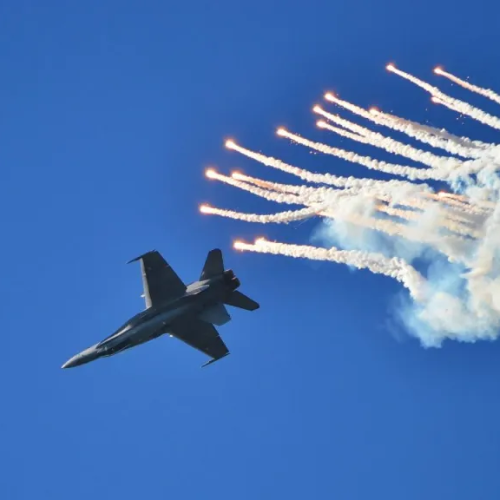In a tense and potentially dangerous encounter in the South China Sea, a Chinese fighter jet came dangerously close to an Australian military plane. The incident, described by Australian Defence officials as “unsafe and unprofessional,” took place on Tuesday, raising concerns about the safety of military operations in the region.
A Close Call Between Two Military Aircrafts
On Tuesday, an Australian Defence Force (ADF) P-8 Poseidon aircraft, a type of surveillance plane used for maritime patrols, was conducting routine operations over the South China Sea. During this time, a Chinese People’s Liberation Army (PLA) J-16 fighter jet approached the P-8 from a very close distance. The PLA jet released flares within just 30 meters of the Australian plane.
Flares are often used by aircraft during military maneuvers, typically to confuse or disrupt the radar of opposing planes or to signal distress. However, when deployed so close to another aircraft, it can be extremely dangerous. It is not uncommon for such close encounters to result in accidents, as the aircraft could potentially collide or suffer damage from the flares.
Despite the alarming proximity, Australian Defence officials have confirmed that no one was hurt and that the P-8 Poseidon aircraft did not sustain any damage. However, the interaction has been described as unprofessional due to the unsafe manner in which the Chinese jet acted.
Australia Raises Concerns with China
The Australian government has taken the matter seriously and lodged formal complaints with China, both in Canberra and Beijing. Australian Defence Minister has expressed concern over the incident, emphasizing that all countries, including China, should ensure their military activities are conducted in a safe and professional way.
The Australian Defence Force (ADF) has made it clear that such encounters, especially when military aircraft are involved, can increase the risk of accidents and create unnecessary tensions between nations. The Australian government’s response highlights the importance of professionalism and safety in military engagements, especially when such incidents occur in highly sensitive regions like the South China Sea.
The Australian government is holding firm in its stance, expressing that these kinds of actions are unacceptable and should be avoided in the future. The focus now is on ensuring such dangerous situations are minimized, as the region remains a point of military interest for many countries.
Chinese Warships Under Surveillance
In addition to the incident in the air, the Australian Defence Force has also been monitoring Chinese warships operating in the Coral Sea, located northeast of Australia. These ships are part of a Chinese naval task force that has raised concerns due to its activities in the area.
The warships currently under surveillance include a Jiangki-class frigate named Hengyang, a Renhai-class cruiser named Zunyi, and a Fuchi-class replenishment vessel known as Weishanhu. Australian Defence officials have emphasized that the Chinese vessels are operating within international law. They have not crossed any borders that would violate Australian territory or the region’s international regulations.
While the Chinese warships are under observation, it is important to note that this particular activity is unrelated to the recent encounter with the Chinese jet fighter. Nevertheless, the Australian government is continuing to monitor these ships closely, using various air and maritime assets to ensure security and uphold Australia’s interests in the region.
While these movements are not unexpected in such an area of international significance, they add to the growing sense of military competition and tension between nations in the South China Sea and surrounding waters. The region is vital for global trade, and any changes in military activity there are always watched carefully by many nations, including Australia.
The Australian Defence Force has made it clear that it will continue to keep a close eye on these developments, ensuring that any further actions, whether in the air or at sea, are conducted safely and professionally to avoid any future incidents.
As the situation develops, the Australian government remains committed to maintaining security in the region and ensuring that all military interactions are handled with the utmost care and professionalism.

